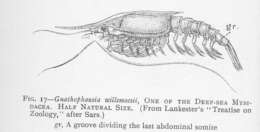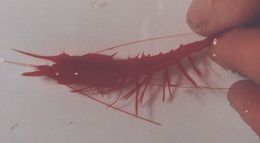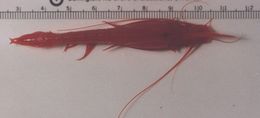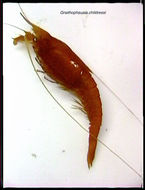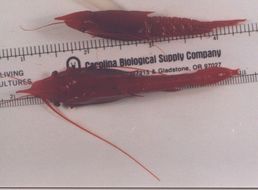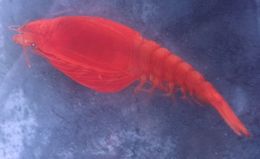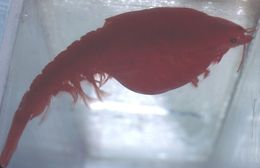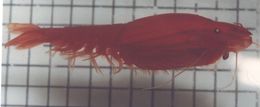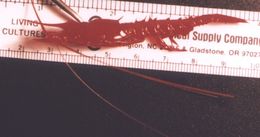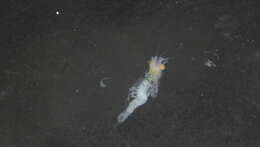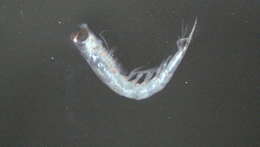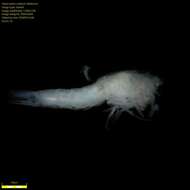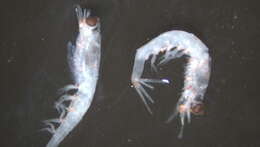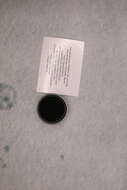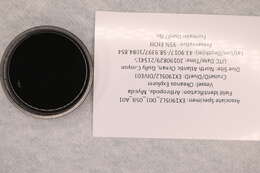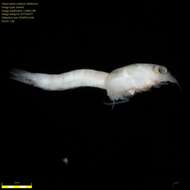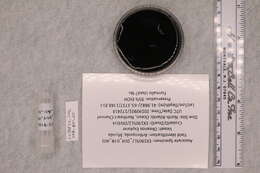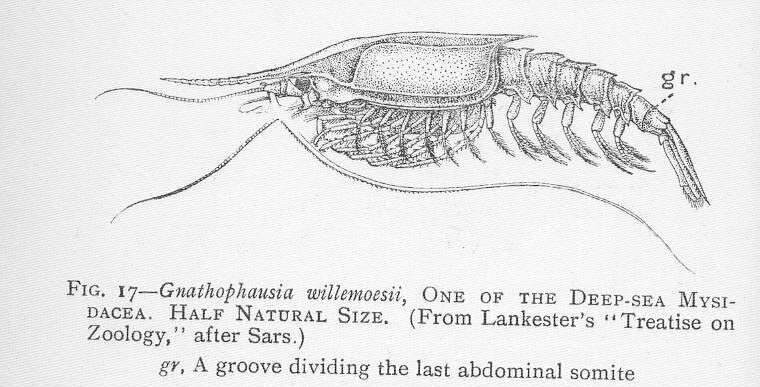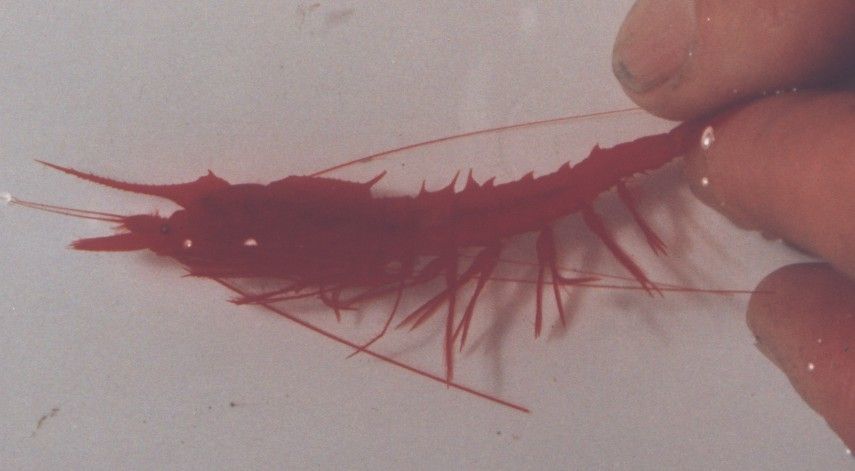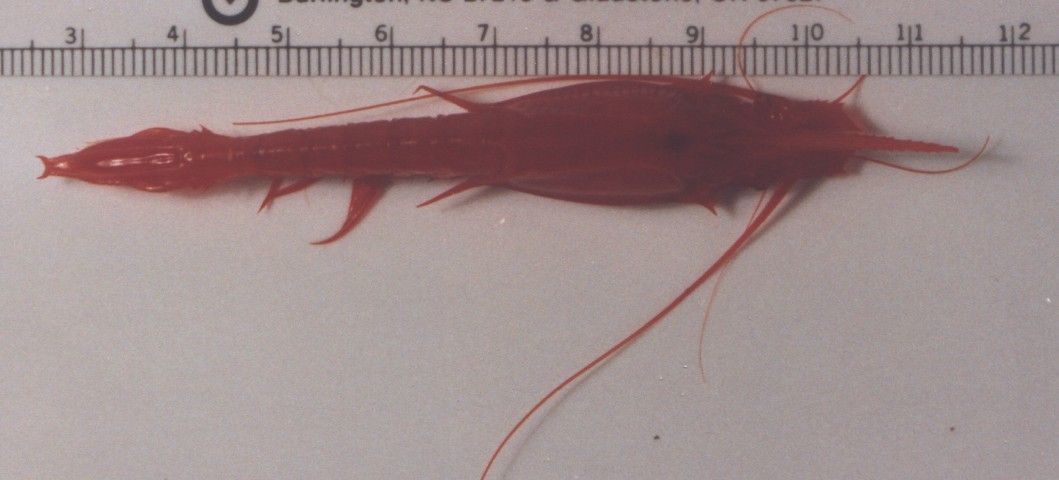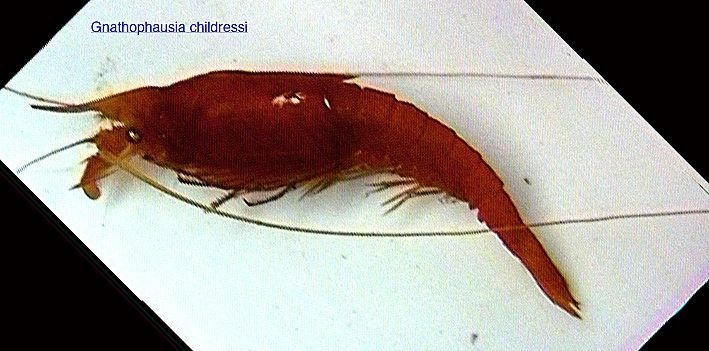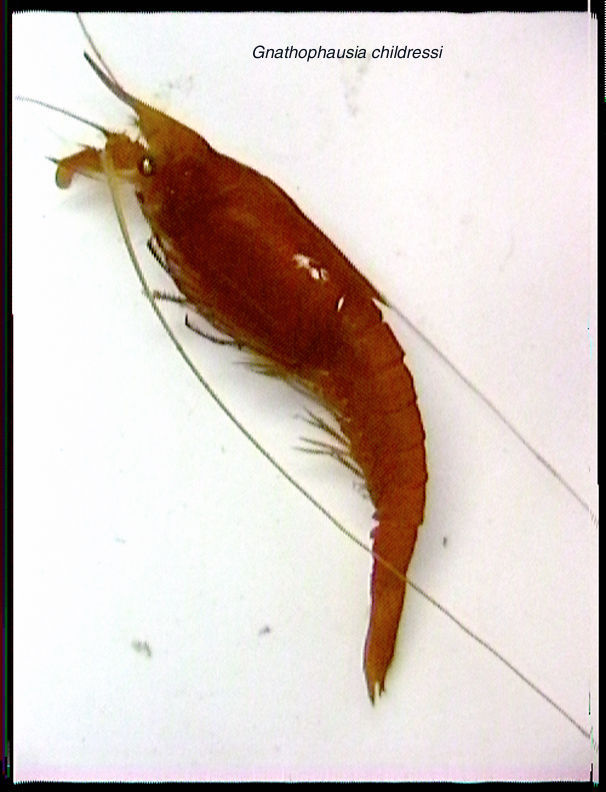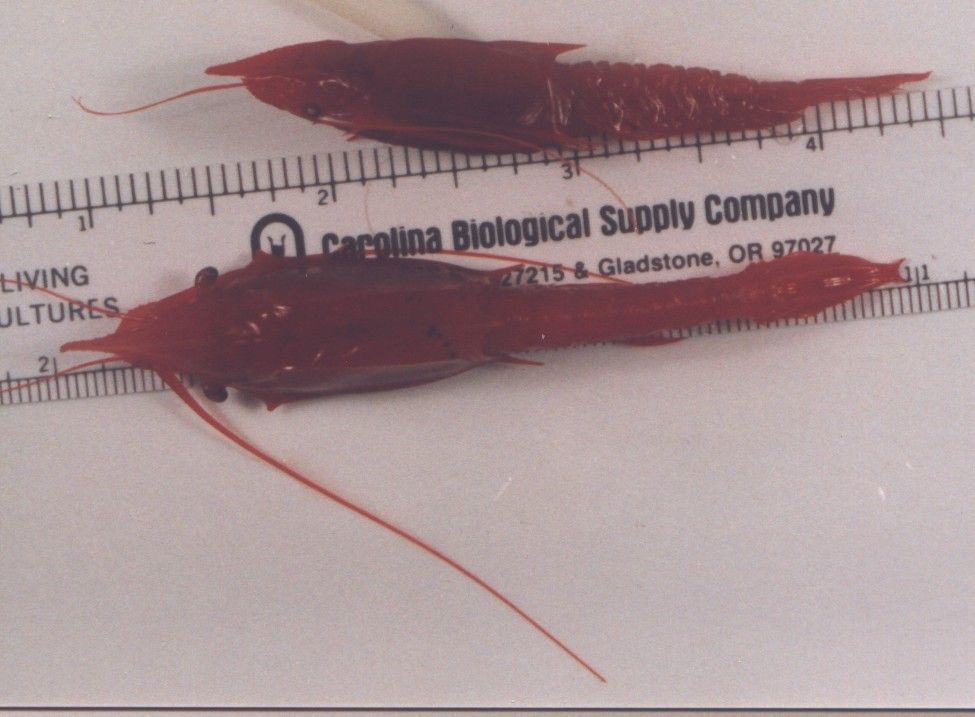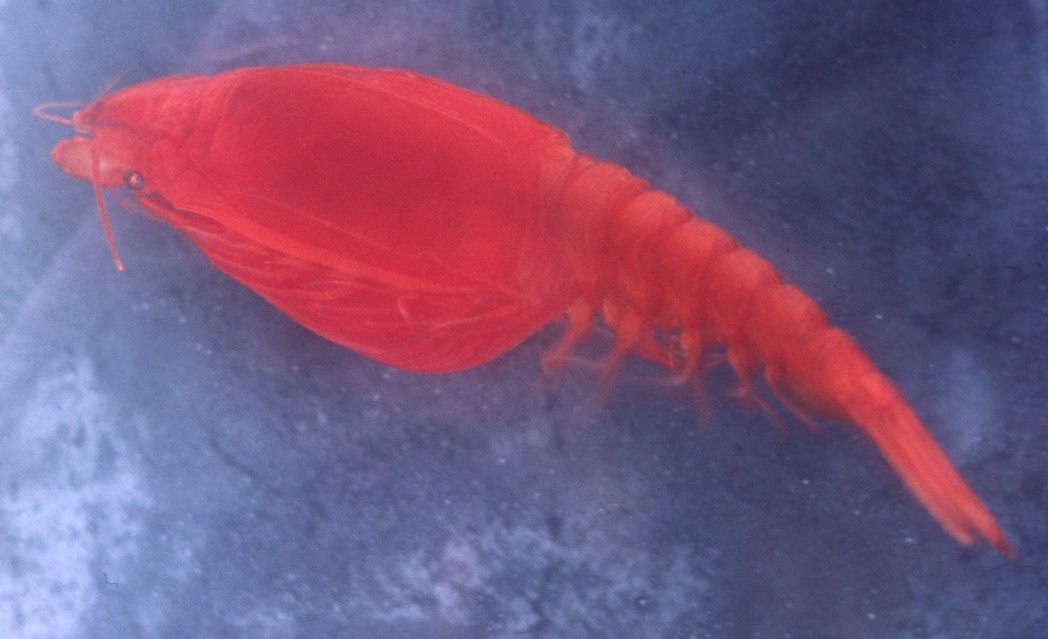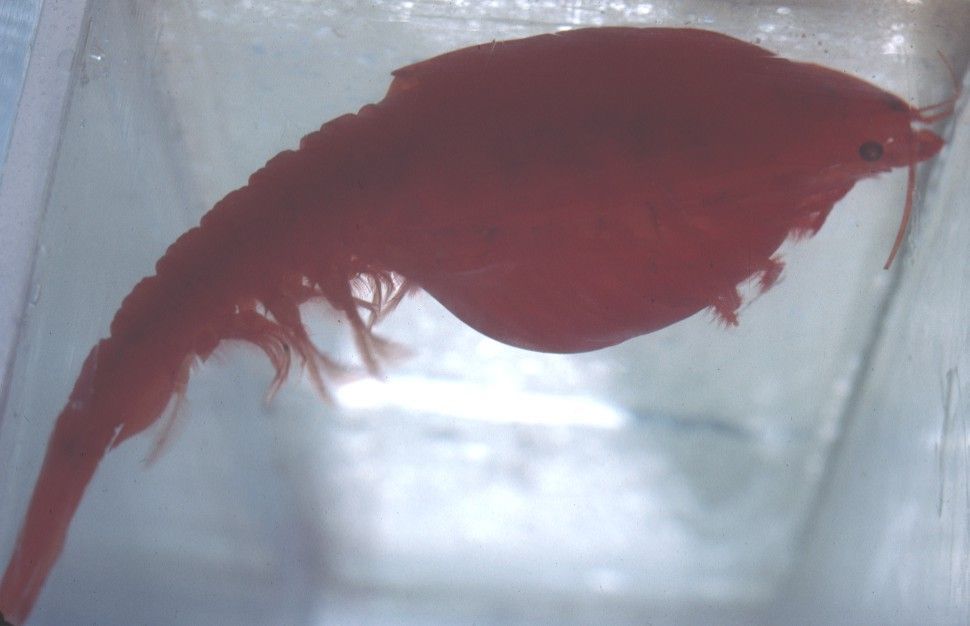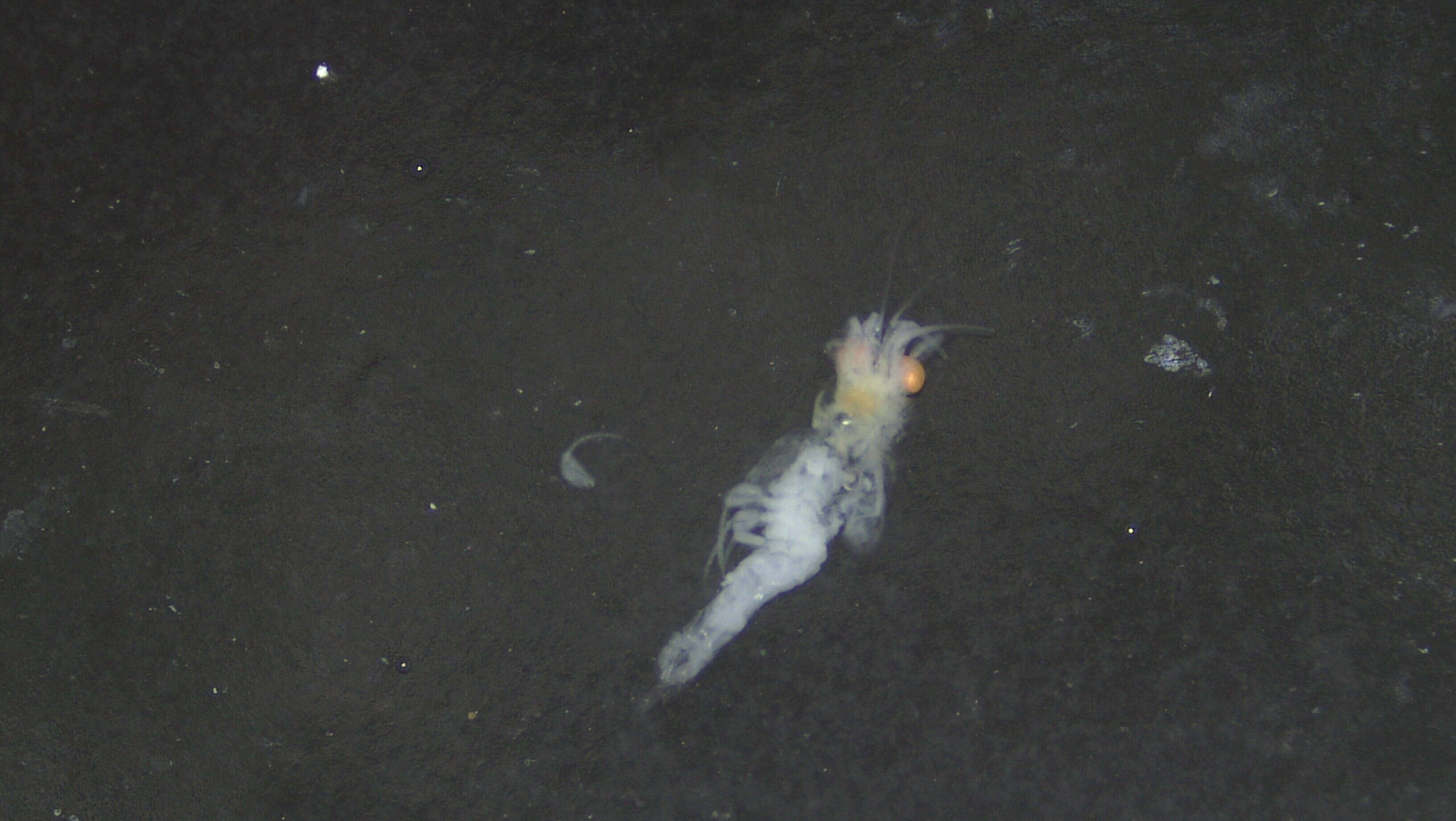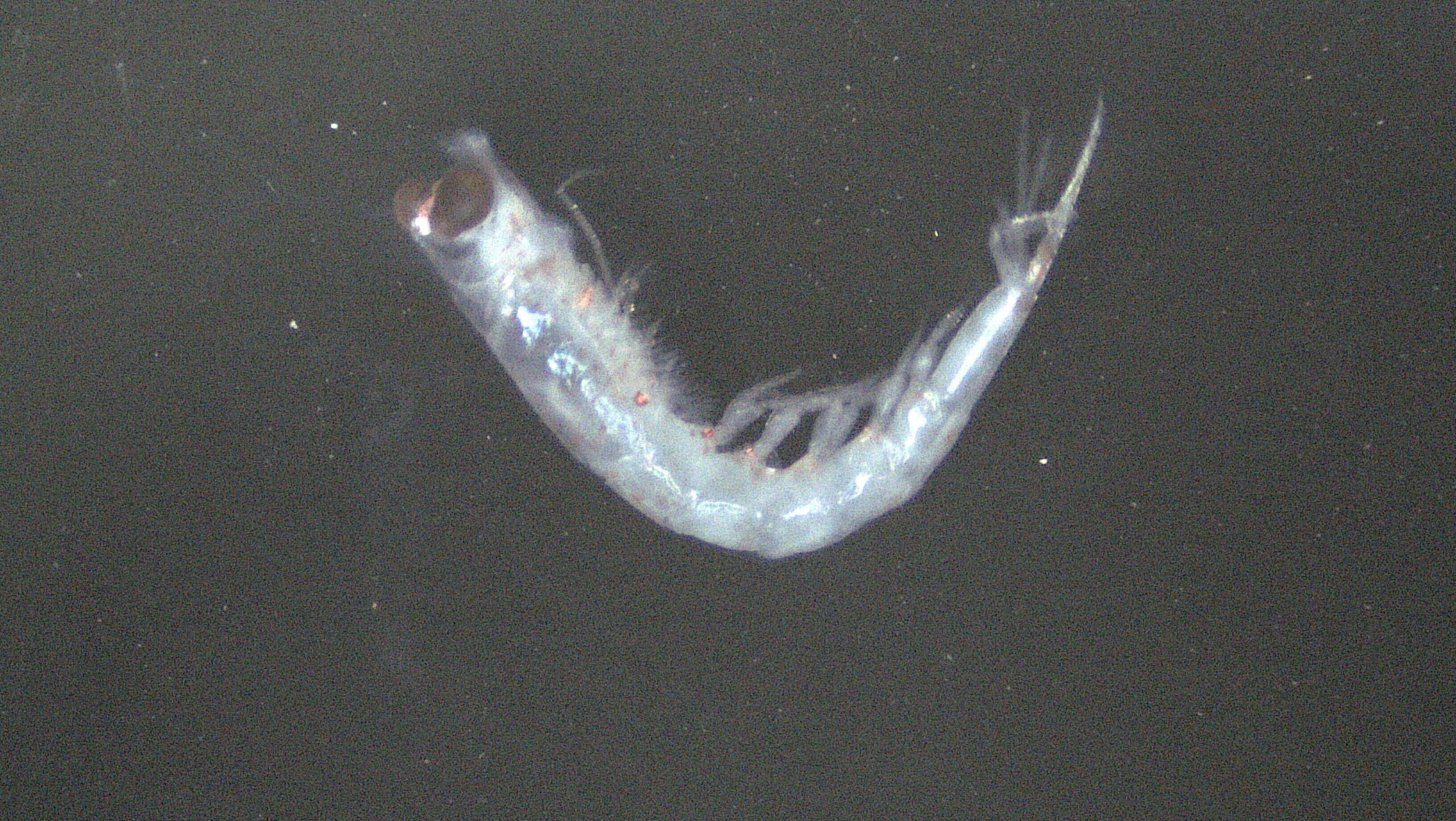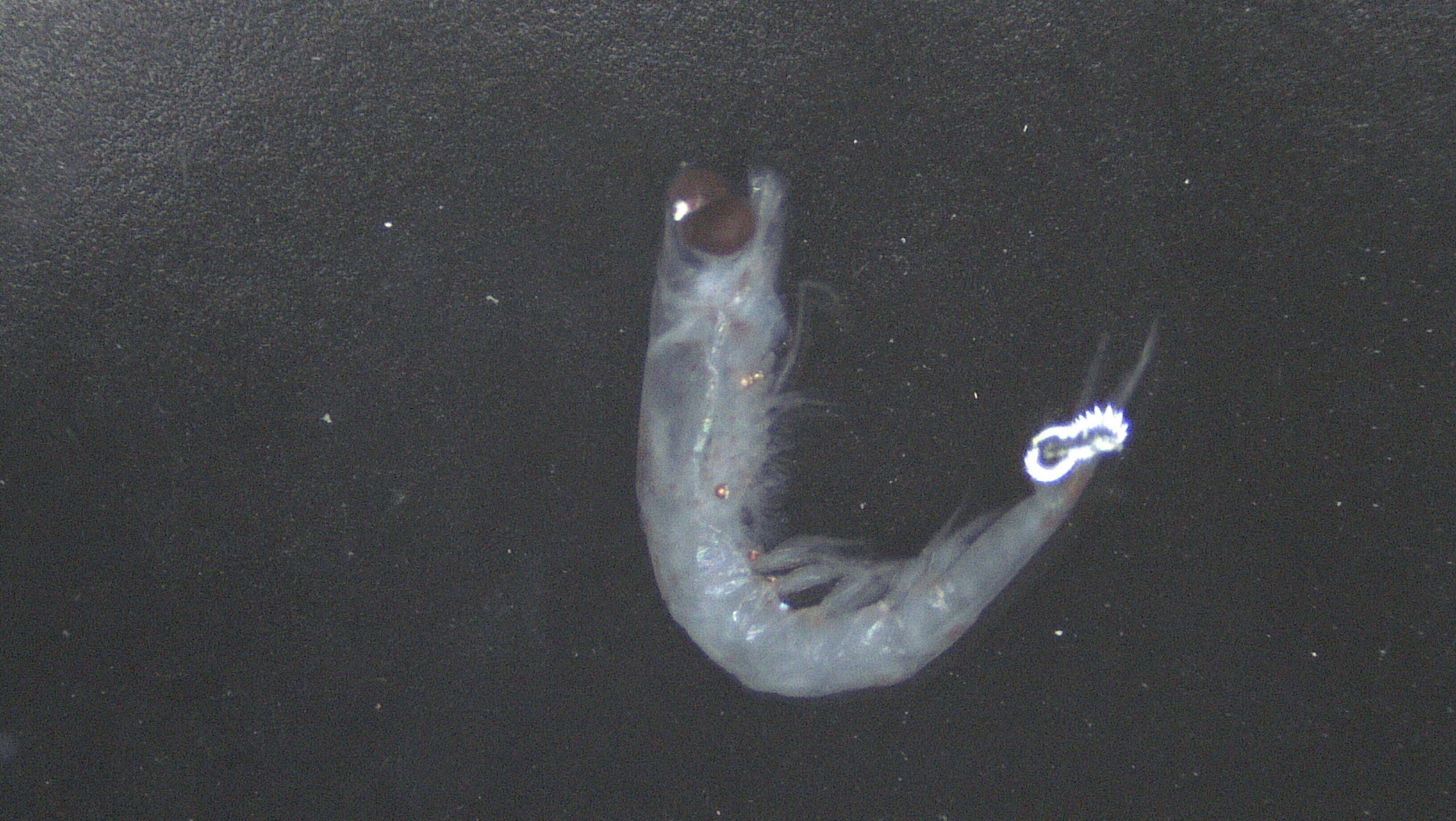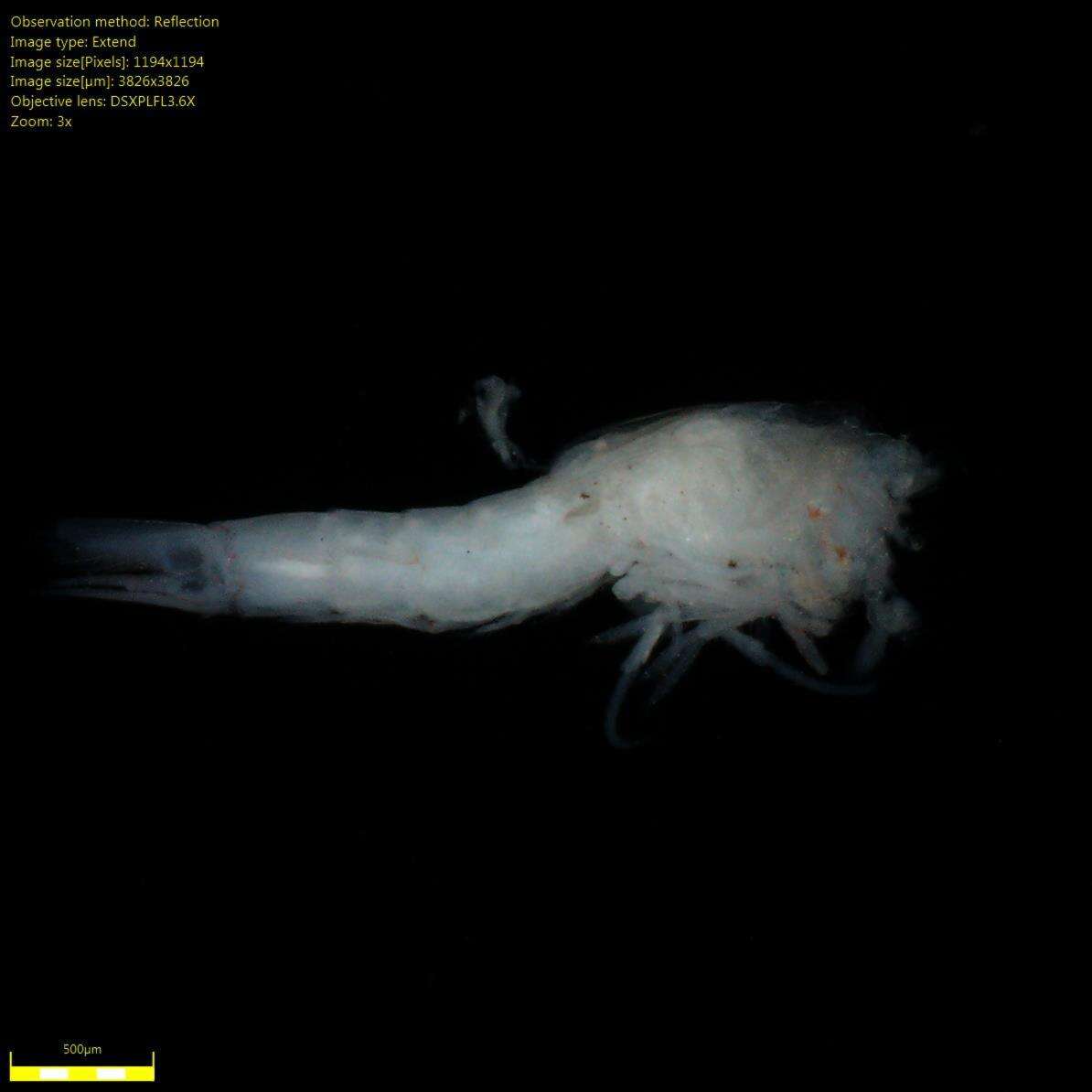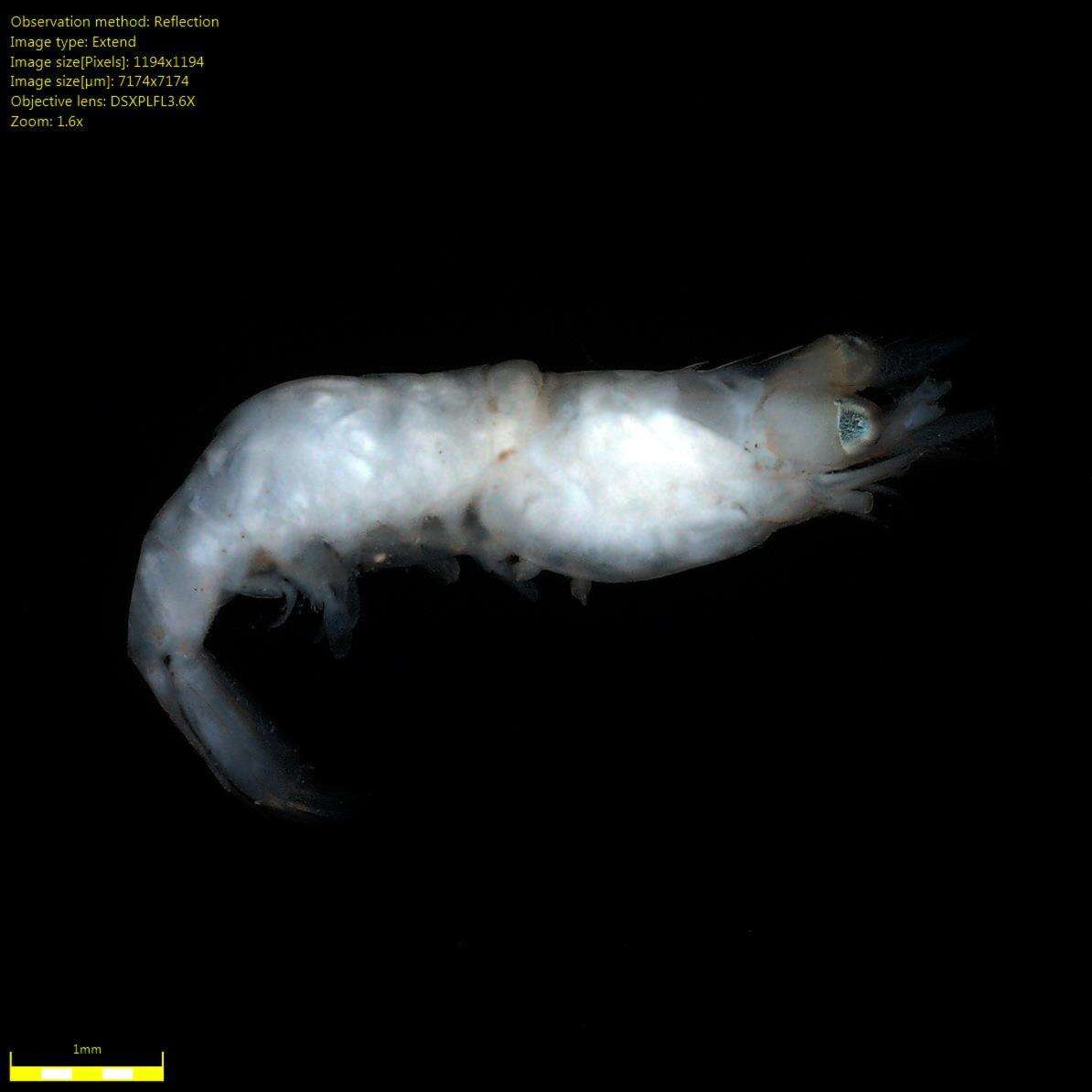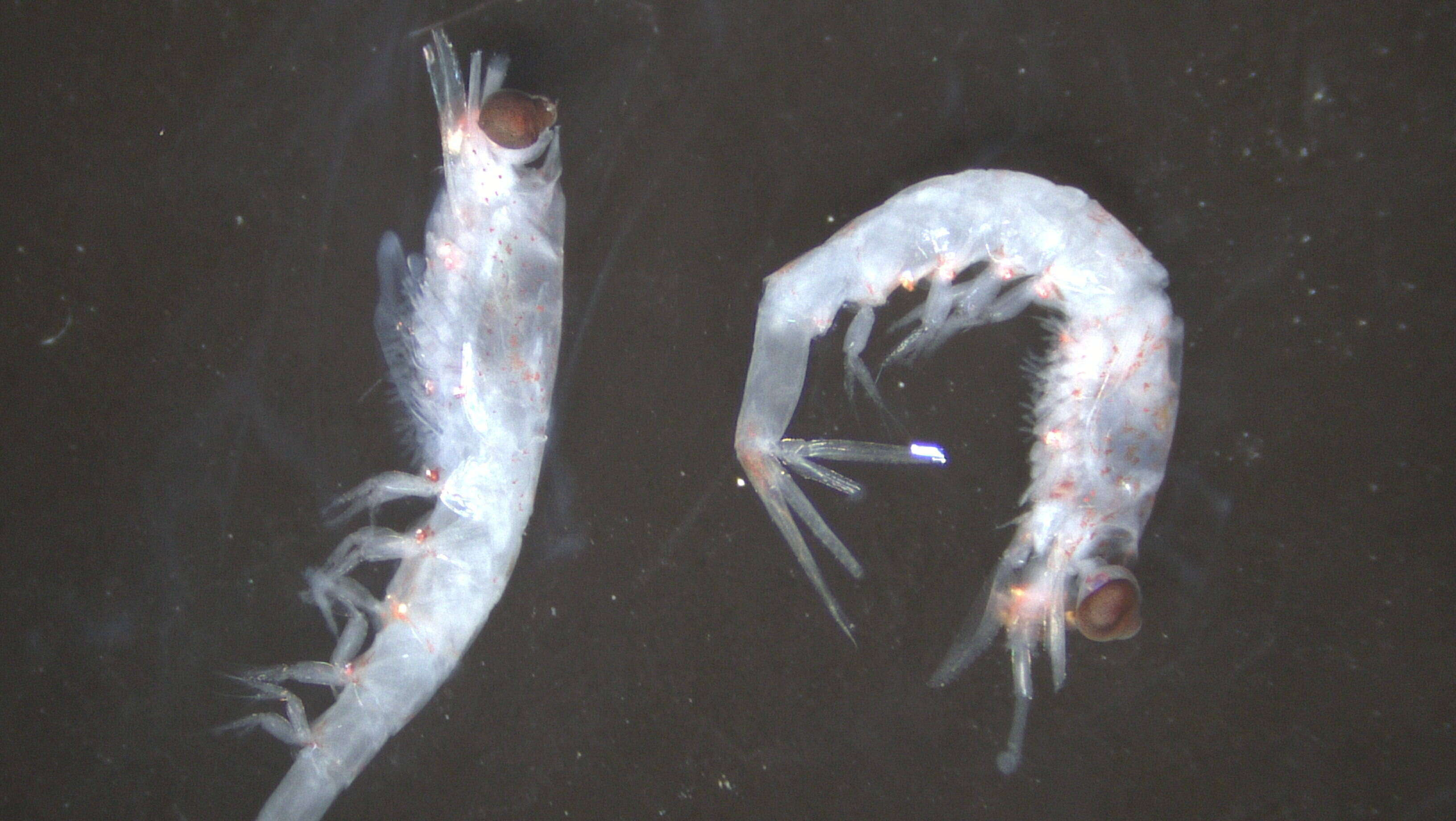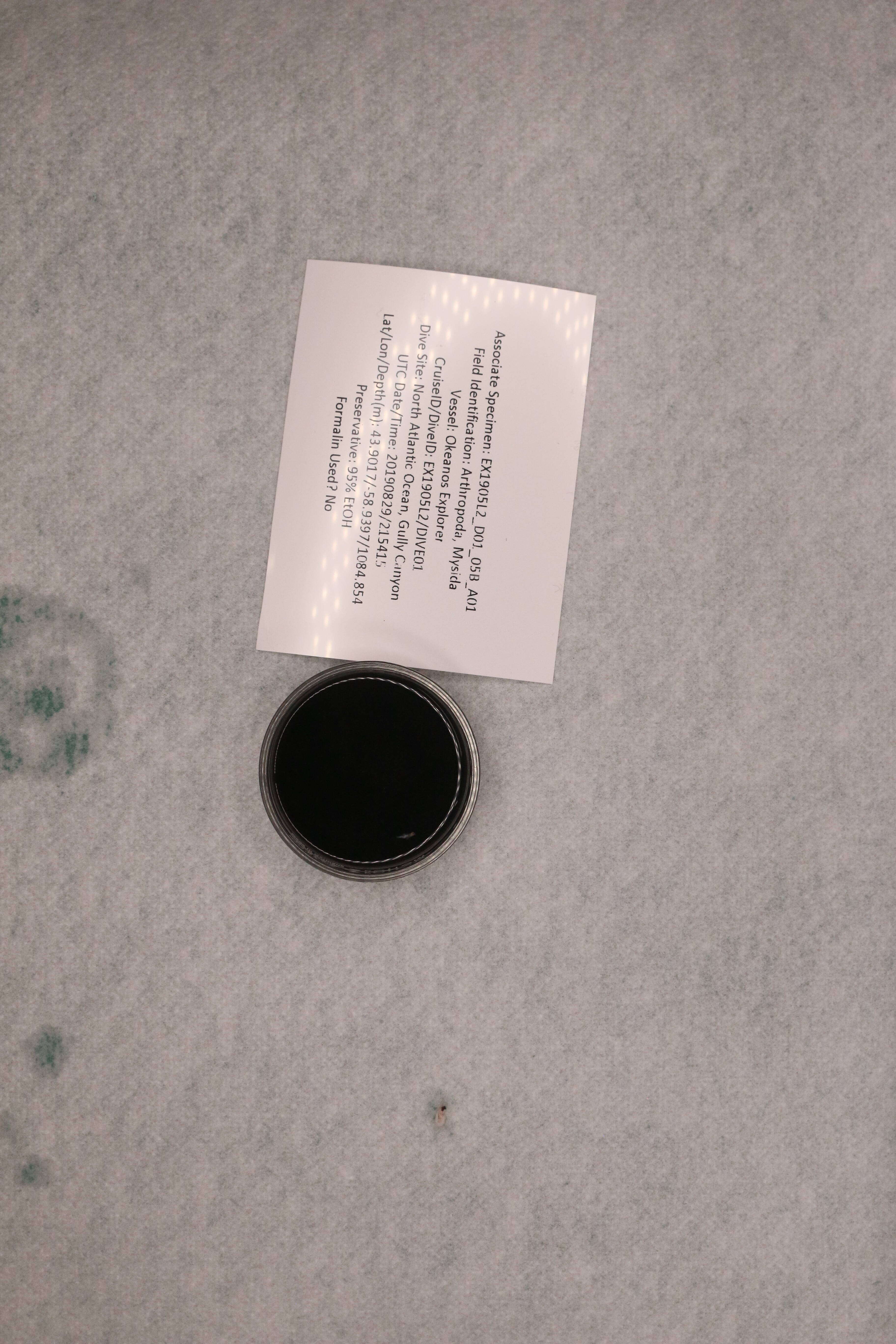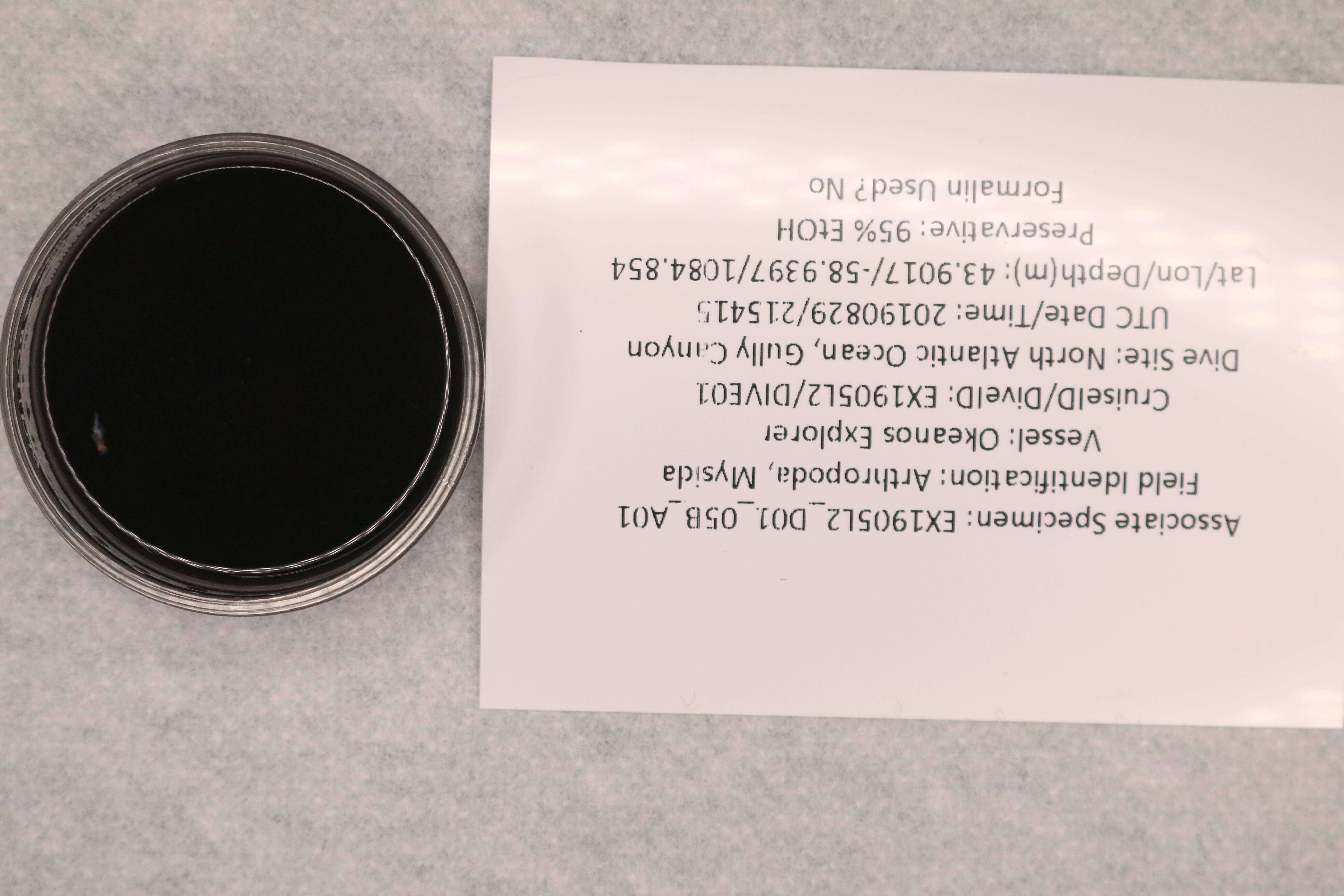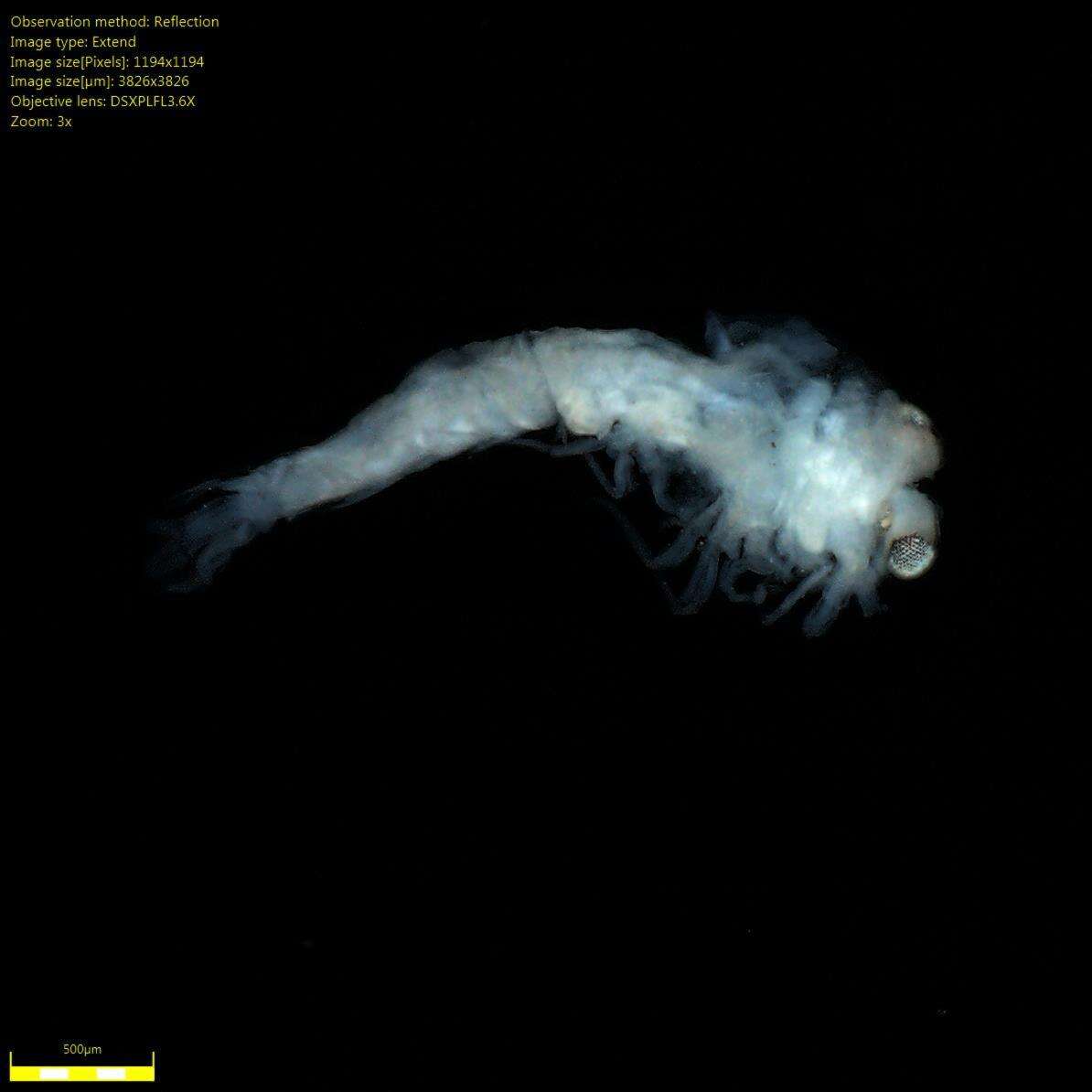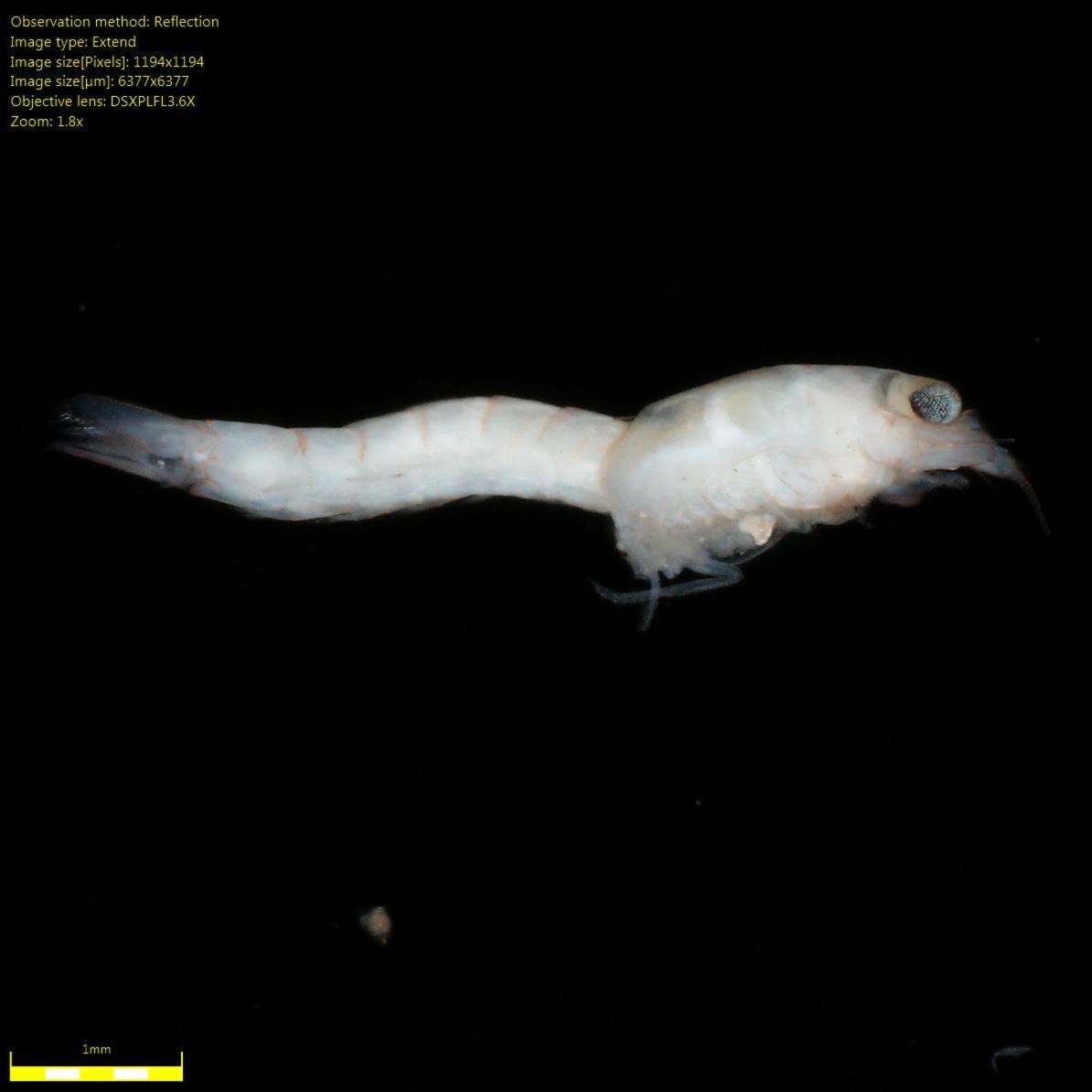-
Gnathophausia millemoesii, one of the deep-sea mysidacea. gr, a groove dividing the last abdominal somite
-
Here is another individual, from San Clemente Basin, CA. Photo by Dave Cowles
-
The relatively long spines (compared with Neognathophausia ingens) and the serrations on the rostrum can be seen in this dorsal view. Photo by Dave Cowles, May 1996 Notice the two spines forming a crescent shape at the tip of the telson, which is characteristic of Gnathophausia and Neognathophausia.
-
Gnathophausia longispina in a petri dish. Captured in midwater off Oahu, HI (Photo by: Jim Childress, 1993)
-
Gnathophausia gigas from 700-800 m, San Clemente Basin, CA (Photo by: Dave Cowles, May 1996)
-
Another photo of this species by Jim Childress. These photos are some of the only ones extant of this species shortly after capture.
-
Gnathophausia childressi (captured at 1900 m depth, San Clemente Basin?) (Photo by: Jim Childress)
-
These juvenile individuals were captured in San Clemente Basin at about 700-800 m depth. Photo by Dave Cowles, May 1996 Note the two spines at the end of the telson which form a crescent-shaped structure characteristic of Gnathophausia and Neognathophausia Notice also that the rostrum in this juvenile is longer in proportion to the animal's total length than is the rostrum of the adult female below, but that it is shorter than that of Neognathophausia gigas.
-
Mysids and Lophogastrids are "opossum shrimps" because the females carry their eggs and young in a thoracic pouch or "marsupium". The dorsal wall of the pouch is the ventral surface of the thorax, while the ventral wall is composed of "oostegites", which are inner, plate-like processes (endopods) projecting from the coxa of the thoracic legs of mature females. The processes overlap one another, forming the pouch. In this 15 cm female with young, the pouch can be clearly seen. She is live and swimming with her pleopods. Photo by Dave Cowles
-
Here is an even larger, live female with marsupium. Photo by Dave Cowles, July 1983. To view an mpg movie showing some of the key features used in identifying Neognathophausia ingens (15.8 Mb), click here.
-
A large sub-adult Gnathophausia ingens swimming past a 1-cm grid. Note that swimming is accomplished with the pleopods, which beat metachronously, and the left and right sides are in opposite phase of beat. The thoracopods are held tightly against the underside of the thorax. (Photo by: Dave Cowles, 1987)
-
Gnathophausia gracilis from 100 mi off Point Conception, CA. Depth about 1000 m. (Photo by: Dave Cowles, May 1996)
-
-
IZ_1596586_MicroscopeImage_01.jpg; EX1905L2_IMG_20190829T215415Z_MICRO_D01_05B_A01_M01.JPG
-
IZ_1596611_MicroscopeImage_02.jpg; EX1905L2_IMG_20190901T172418Z_MICRO_D04_04B_A01_M02.JPG
-
IZ_1596611_MicroscopeImage_03.jpg; EX1905L2_IMG_20190901T172418Z_MICRO_D04_04B_A01_M03.JPG
-
USNM 1435965 specimen image; FTP_3129
-
USNM 1436076 specimen image; FTP_3400
-
IZ_1596611_MicroscopeImage_01.jpg; EX1905L2_IMG_20190901T172418Z_MICRO_D04_04B_A01_M01.JPG
-
IZ_1596586_LabImage_01.jpg; EX1905L2_IMG_20190829T215415Z_SMPSTL_D01_05B_A01_L01.JPG
-
IZ_1596586_LabImage_02.jpg; EX1905L2_IMG_20190829T215415Z_SMPSTL_D01_05B_A01_L02.JPG
-
USNM 1436080 specimen image; FTP_3406
-
USNM 1436000 specimen image; FTP_3288
-
IZ_1596611_LabImage_01.jpg; EX1905L2_IMG_20190901T172418Z_SMPSTL_D04_04B_A01_L01.JPG


